

Yoga for COPD (Chronic Obstructive Pulmonary Disease) combines gentle poses, breathing exercises, and relaxation techniques specifically designed to improve breathing capacity, reduce shortness of breath, and enhance quality of life. Research shows that mind-body exercises, such as yoga, can significantly enhance lung function and boost physical endurance in COPD patients.
Whether you’ve just been diagnosed or have been managing COPD for years, yoga offers a safe, low-impact way to support your breathing and overall well-being.
Continue reading to learn more about yoga for COPD, discover essential poses and breathing exercises for relief, and explore safe, guided practices to help you breathe with ease.
[inline-CTA-1]
Breathing exercises are a core component of any yoga practice for COPD. These techniques can help strengthen the diaphragm, slow down your breathing rate, and reduce the sensation of breathlessness.
Discover some of the most effective yoga breathing exercises here!
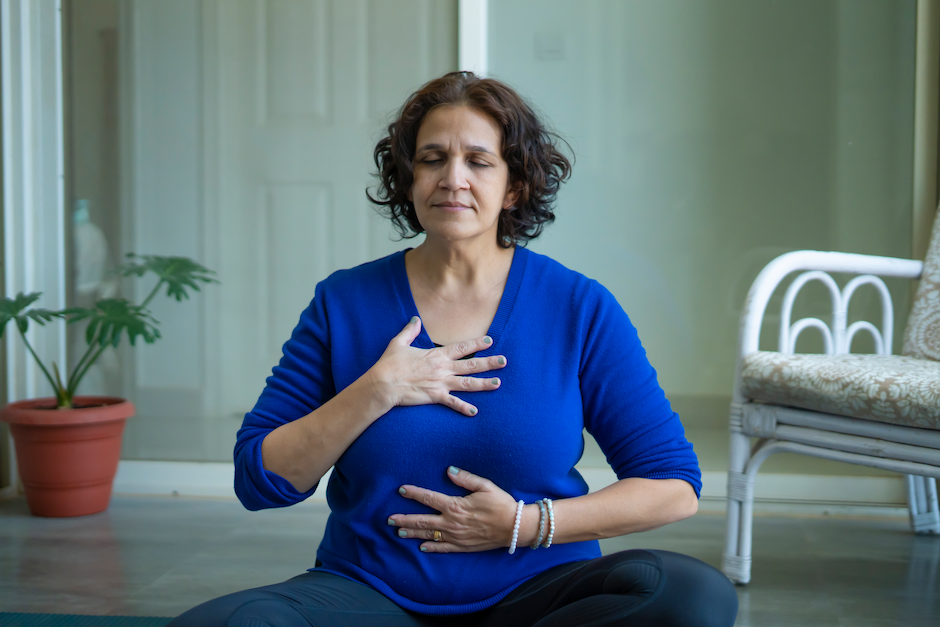
This breathing technique improves diaphragmatic strength, reduces shortness of breath, and increases oxygen efficiency.
Pursed-lip breathing helps prevent air trapping in the lungs, eases breathlessness, and improves control over exhalation.
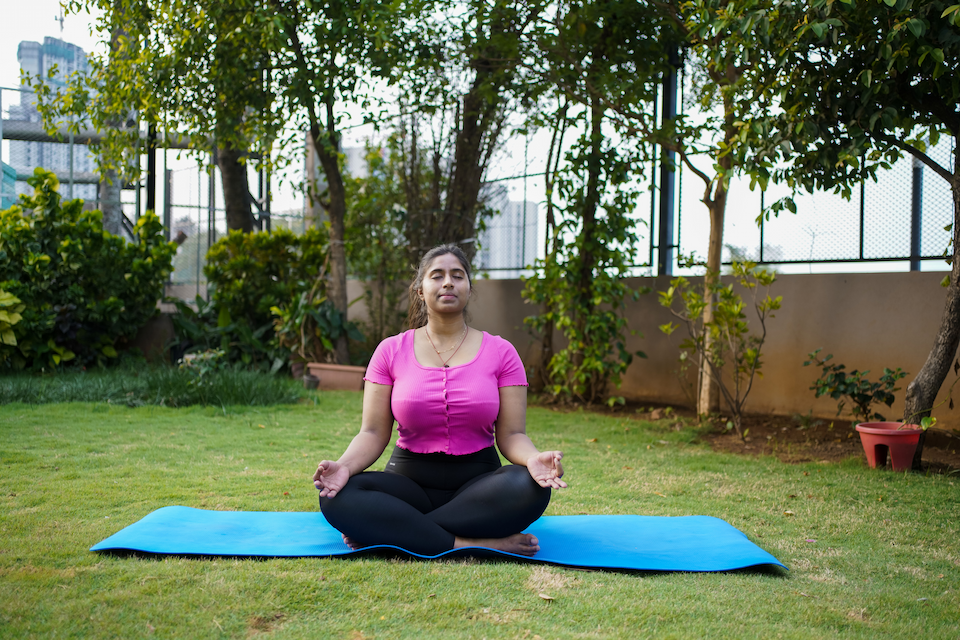
This is an essential breathing technique to calm the nervous system, reduce anxiety, and slow respiratory rate — especially helpful during COPD flare-ups.
Box breathing promotes rhythm in breathing, reduces stress, and enhances mental focus.
This breathing exercise creates vibrations that relax the airways and sinuses, reduces anxiety, and enhances breath awareness.
According to research, gentle yoga practice lasting from 12 weeks to 9 months can significantly improve COPD symptoms.
The following yoga poses help open the chest, improve posture, and promote deeper, more efficient breathing:
The following standing yoga poses help strengthen posture, improve balance, and open the chest, all of which support easier, fuller breathing for people with COPD.
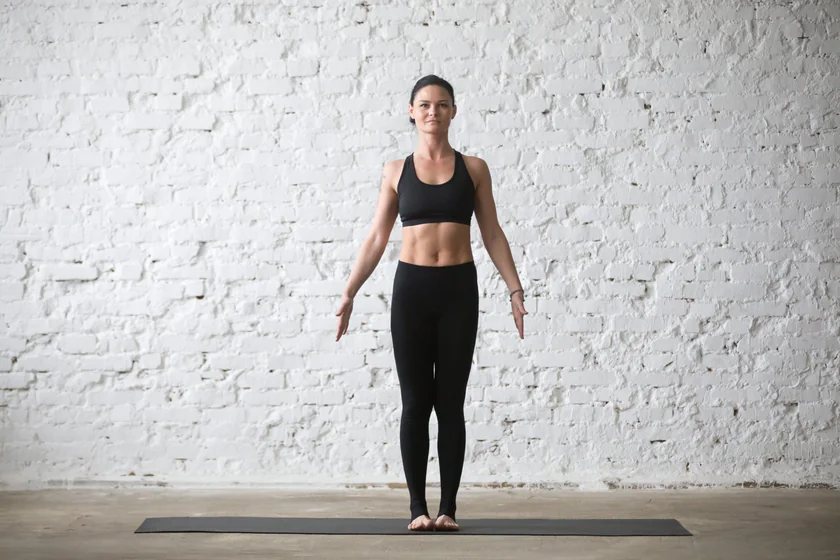
This pose improves posture and breath awareness, and gently activates the respiratory muscles.
This pose stretches the intercostal muscles, encourages deeper breathing, and improves side-body flexibility — ideal for enhancing lung expansion.
This pose opens the chest and lungs, improves posture, and counteracts the slouching that often restricts airflow in COPD patients.
These seated adaptations offer the same benefits as traditional poses — improved lung function, better posture, and reduced stress — without overexertion.
Make sure to use a sturdy chair without wheels and always practice near a wall or surface for support if needed.
Learn more about Chair Yoga in this detaile guide!
This pose enhances posture, promotes mindful breathing, and sets the foundation for your practice.

This is a great pose to open the rib cage, encouraging fuller breaths and better lung expansion.
This pose improves spinal mobility and supports chest and lung expansion.
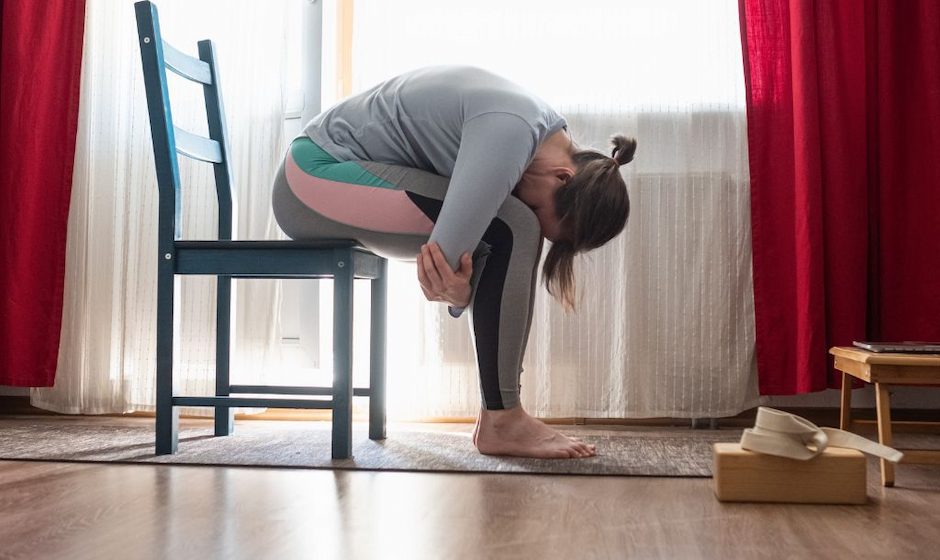
Forward Fold calms the nervous system and encourages deep, diaphragmatic breathing.
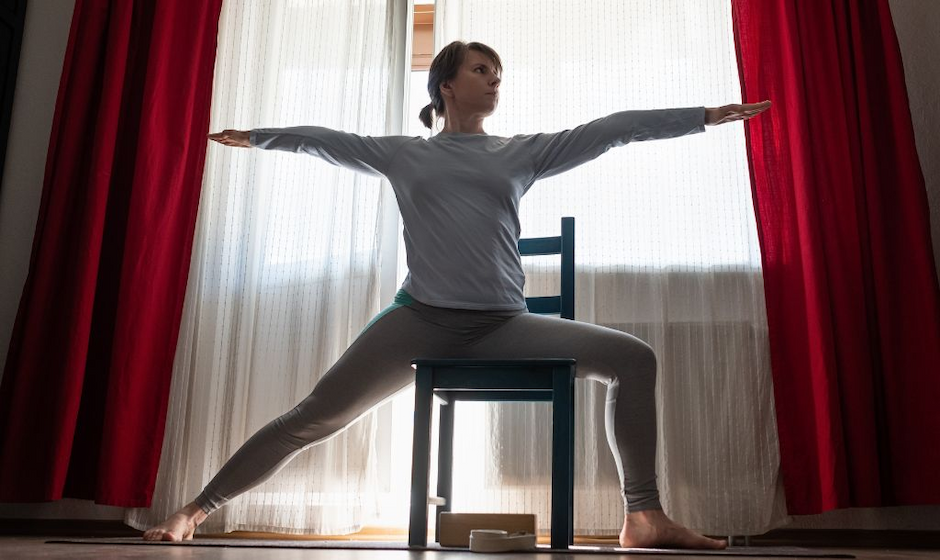
This pose builds lower body strength while promoting balance and breath awareness.
Restorative yoga poses are designed to calm the nervous system, relax the body, and support easier breathing without any effort. These poses use props like bolsters, pillows, or blankets to fully support your body.
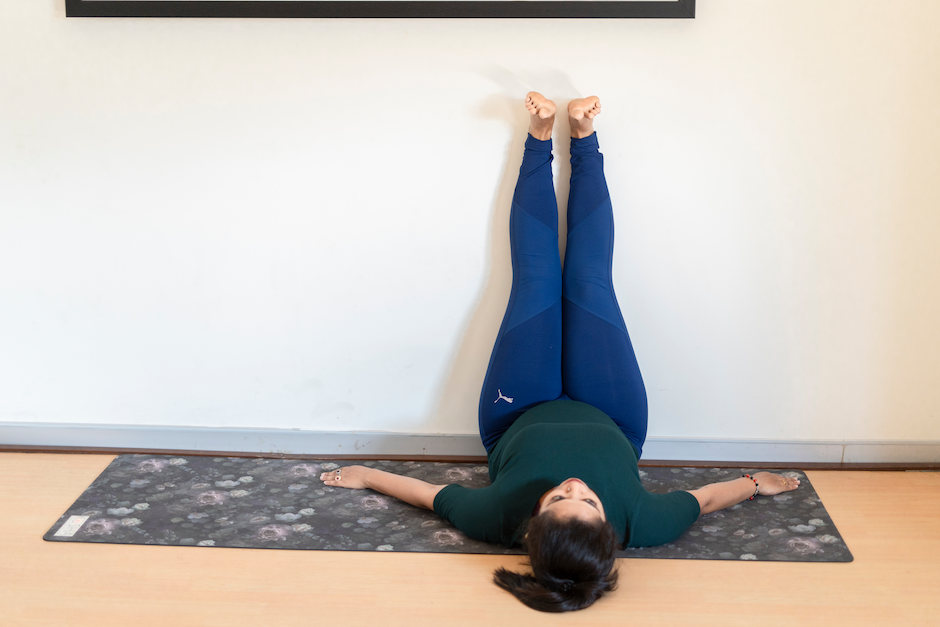
This pose promotes relaxation and reduces pressure on the diaphragm and lungs.
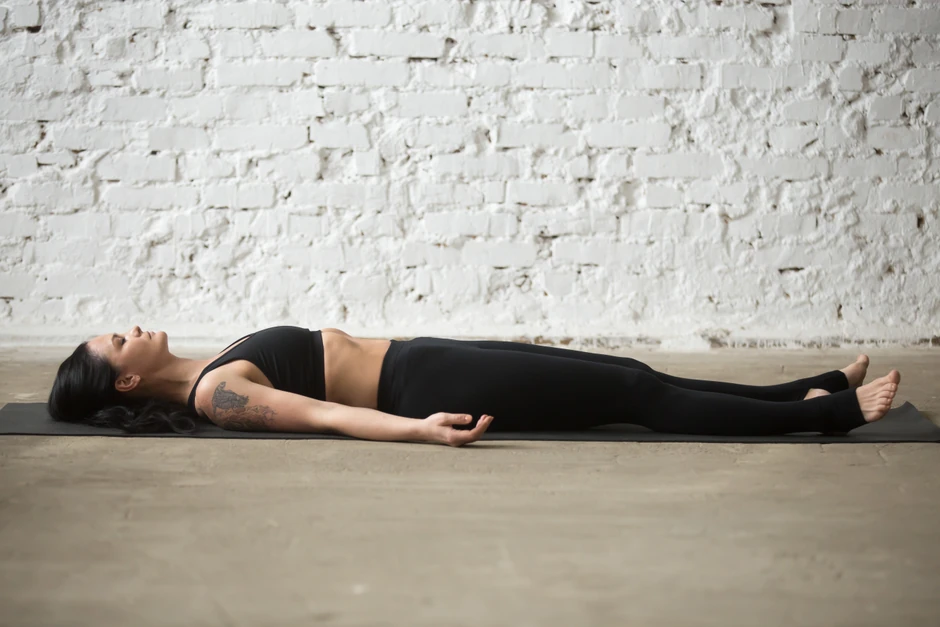
Corpse pose allows the body to absorb the effects of your practice. It encourages complete relaxation, reduces stress, and promotes slower, more efficient breathing, which is essential for COPD recovery and symptom relief.
[inline-CTA-2]
Starting yoga with COPD doesn't have to be complicated — even 10 to 15 minutes of daily practice can make a meaningful difference. The key is to create a consistent routine that combines breathing techniques and gentle movement.
Here’s a sample weekly yoga plan that builds gradually and supports your lung function and energy levels:
While yoga offers many benefits for people with COPD, it's essential to approach your practice with care. These safety guidelines will help you practice confidently and avoid unnecessary discomfort or strain.
Managing COPD is about choosing movement that works with your body — not against it. The right approach can support your lungs, boost your energy, and help you move with more ease and confidence.
With expert-guided yoga, you can improve your breathing, reduce flare-ups, and build strength, all from the comfort of your home.
Yoga for COPD is a gentle, low-impact practice that combines breathing techniques, poses, and relaxation to improve lung function, reduce breathlessness, and enhance quality of life. It's tailored for people with chronic respiratory issues and can be modified to suit any mobility level.
Yes. Regular yoga practice can:
Clinical studies show that COPD patients who practice yoga report improved quality of life and reduced reliance on rescue inhalers.
The best yoga poses for COPD include:
Chair yoga adaptations for accessibility and support
Absolutely. Chair yoga for COPD provides all the benefits of traditional yoga without the need for standing or balance. It's ideal for seniors or anyone experiencing fatigue, and it supports safe, consistent movement and breathing.
The best yoga breathing techniques for COPD include:
Each method promotes relaxation and better oxygen exchange.
Start with 10–20 minutes, 3–5 times per week. Consistency is more important than duration. Over time, as your energy improves, you can increase the length and variety of your sessions.

Receive personalized guidance tailored to your unique fitness goals, live with a dedicated coach—no credit card required.